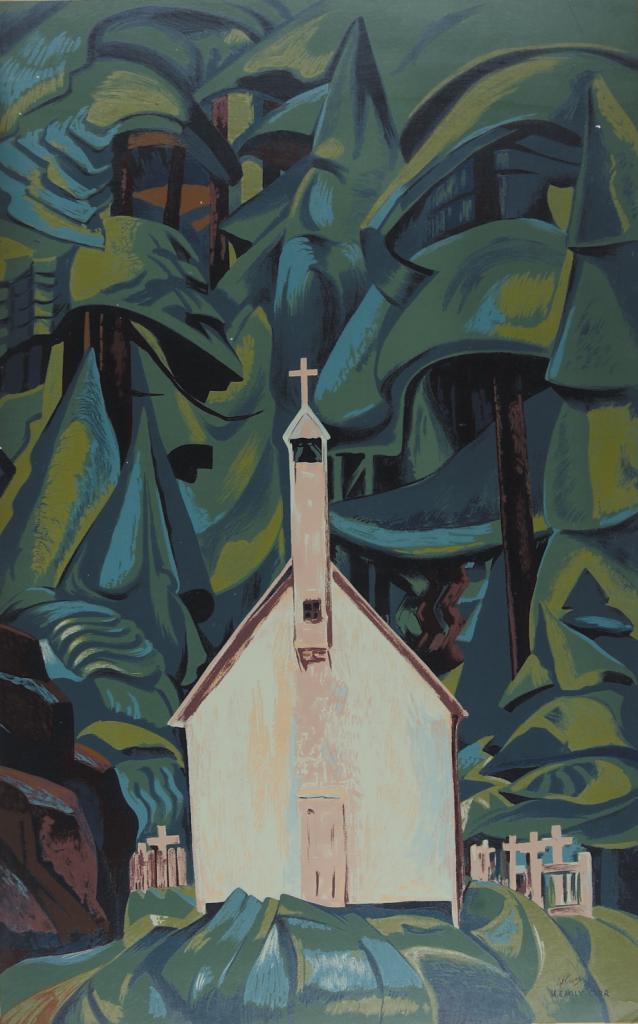Canadian artist Emily Carr was born in Victoria, British Columbia in 1871. She studied in San Francisco in 1889–1895, and in 1899 she travelled to England, where she was involved with the St. Ives group and with Hubert von Herkomer’s private school.
She lived in France in 1910 where the work of the Fauves influenced colour in her work and where she came into contact with Frances Hodgkins. Discouraged by her lack of artistic success, she returned to Victoria where she came close to giving up art altogether.
However, her contact with the Group of Seven in 1930 resurrected her interest in art, and throughout the 1930s she specialized in scenes from the lives and rituals of the First Nations. She also showed her awareness of Native Canadian culture through a number of works representing the British Columbian rainforest. She lived among the tribes to research her subjects. Many of her Expressionist paintings represent totem poles and other artefacts of First Nations culture.
A trip to Nootka Island, British Columbia, inspired Emily Carr to paint ‘Indian Church’. A fascination with the pacific coast and the spirituality of the Native people were the perpetual driving force of her work. The artist’s primitive and spiritual side shine through in the painting that symbolizes life and death. The graveyard around the church, pale in color, symbolizes death; while the rainforest of rich green tones reflects life. In her autobiography she stated, “There is something bigger than fact: the underlying spirit, all it stands for, the mood, the vastness, the wilderness, the Western breath of the go-to-the-devil-if-you-don’t-like-it, the eternal big spaceness of it. Oh the West! I’m of it and I love it!”
Writer Lee Parsons describes ‘Indian Church’ in his article ‘Emily Carr: Painter, writer… symbol’ as primitive with distinctly cubist simplification of form. He comments, “Surrounded by ominous green shapes, a starkly pale Christian church is placed, more in two dimensions that three, as an intruder in a feral forest—emphasizing starkly the conflicting worlds brought together here.”
‘Indian Church’ was one of the paintings created during the most prolific period of the artist’s career, a time when Emily Carr had begun to modify her techniques, moving from watercolors to experimenting with oil on canvas. Acceptance by the Group of Seven opened new doors for her. After exhibiting in the National Gallery in 1927, she was motivated to return home and pursue her art. Landscapes featuring the lush western forests, beautiful waters and skies of the British Columbian coast became her focal point.
This painting was chosen specifically by A.J. Casson for reproduction at Sampson Matthews, one of a few he requested himself for the silkscreen process.
